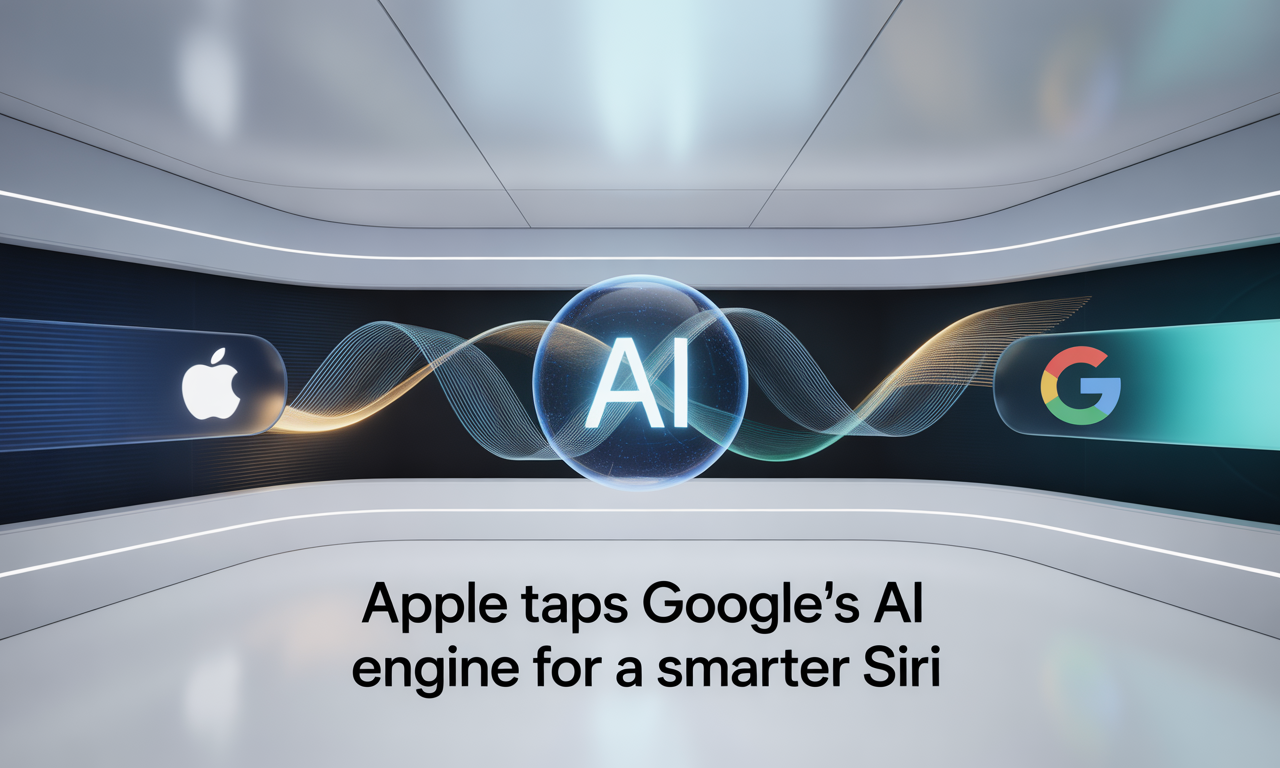Apple Taps Google’s AI Engine for a Smarter Siri
Intermediate | November 13, 2025
✨ Read the article aloud on your own or repeat each paragraph after your tutor.
Apple Taps Google’s AI Engine for a Smarter Siri
On November 5, 2025, Apple Inc. revealed plans to use Google LLC’s powerful 1.2‑trillion‑parameter AI model known as Gemini to power its revamped voice assistant Siri—in what many analysts see as a strong signal that Apple is catching up in the artificial‑intelligence arms race. (Reuters)
The reported deal would cost Apple roughly $1 billion per year for access to Google’s AI technology. (Bloomberg)
Siri has long lagged behind rivals like Alexa and Google Assistant when it comes to managing complex, multi‑step voice commands. By using Google’s model as a stop‑gap while its own systems mature, Apple hopes to restore competitive momentum. (Indian Express)
Why This Matters for Business English and Tech‑Minded Professionals
This story is more than a gadget update—it’s a window into strategic partnerships, payment negotiations, and technology leadership. You’ll hear phrases like “nearing a deal”, “accessing third‑party AI”, and “bridging the gap in capabilities”. These are the kinds of expressions you might find in executive meetings or tech‑reports.
For busy professionals, understanding this helps you talk not only about features, but about why a company makes a move—e.g., to stay relevant, to invest in future growth, or to collaborate rather than build everything in‑house.
Inside the Deal: What’s Happening?
Apple evaluated several options—models from OpenAI and Anthropic were reportedly in contention before the decision to lean on Google. (The Verge)
The deal gives Apple access to Google’s pretrained Gemini AI, but it does not mean integrating Google’s search engine into Apple’s operating systems. (Reuters)
In the near term, Apple will use this partnership to accelerate Siri’s intelligence while it continues investing in its own long‑term models. The collaboration signals a shift from purely in‑house development to a hybrid approach.
From a business‑English standpoint: note how companies talk about “leveraging external capability”, “executive shake‑ups” (Apple moved its Siri head), and “transitioning legacy systems”. (Reuters)
What This Means for Apple’s Future
If the partnership works, Apple may regain momentum in the smart‑assistant market, enhance its AI credibility and strengthen the broader ecosystem of its devices and services. On the flip side, paying another company’s billion‑dollar model may raise questions about in‑house innovation and cost structure—two areas busy professionals often discuss in strategy meetings.
In short: the move positions Apple as catching up rather than leading—and that message may resonate in boardrooms and briefings.
Vocabulary
- Parameter (noun) – a value or setting that defines operation of a model.
Example: “Google’s 1.2 trillion‑parameter model sets a high bar for AI.” - Overhaul (noun) – a comprehensive revision or reconstruction.
Example: “Apple’s overhaul of Siri is a major strategic initiative.” - Stop‑gap (noun) – a temporary solution until a permanent one is available.
Example: “Apple is using Google’s model as a stop‑gap.” - Capability (noun) – the ability or power to do something.
Example: “Siri’s capability has lagged behind its rivals.” - Hybrid (approach) (noun) – a method combining two different systems.
Example: “Apple is moving to a hybrid approach of in‑house and external AI.” - Leverage (verb) – to use something to maximum advantage.
Example: “Apple is leveraging Google’s AI to speed up development.” - Ecosystem (noun) – a network of related products, services or companies.
Example: “Improved Siri will strengthen Apple’s device ecosystem.” - Innovation (noun) – a new method, idea or product.
Example: “Investors are watching Apple’s innovation in AI closely.” - In‑house (adjective) – developed within the company rather than outsourced.
Example: “Apple continues to develop its own in‑house models.” - Transition (noun) – the process of changing from one state or system to another.
Example: “The transition to Google’s model marks a shift in strategy.”
Discussion Questions (About the Article)
- Why did Apple decide to partner with Google for its next‑gen Siri instead of relying solely on its own AI?
- What are the benefits and risks of using a “stop‑gap” solution in technology development?
- How does paying $1 billion per year for access to another company’s AI reflect on Apple’s strategy?
- What kinds of business‑English expressions would you use to describe this deal in a meeting?
- From your perspective, does this move show innovation or dependency? Why?
Discussion Questions (About the Topic)
- How important is external partnership versus internal capability in tech development?
- What language do companies use when they shift from building in‑house to buying technology?
- How can professionals explain the strategic value of a high‑cost agreement in simple terms?
- In what ways might this deal affect Apple’s image as an innovator?
- How would you describe this situation to someone unfamiliar with tech business strategy?
Related Idiom
“Bridge the gap” – to reduce the difference between two things.
Example: “Apple is bridging the gap in voice‑assistant capabilities by tapping Google’s AI.”
📢 Want more insights like this? 👉 Sign up for the All About English Mastery Newsletter! Click here to join us!
Want to finally Master English but don’t have the time? Mastering English for Busy Professionals is the course for you! Click here
Follow our YouTube Channel @All_About_English for more great insights and tips.
This article draws inspiration from: Reuters, Bloomberg, The Verge.


